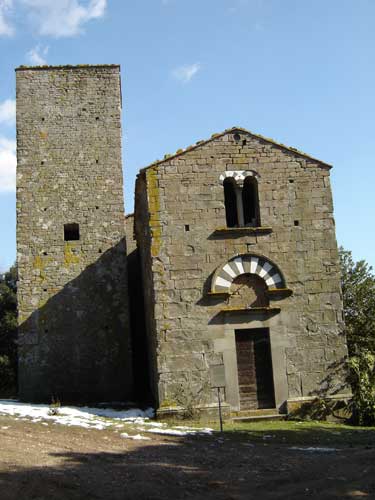 Abbey of S. Giusto al Pinone
Abbey of S. Giusto al PinoneThis is a typical religious building from the XII century built in sand stone with a transept and three apses, and an added massive bell tower with a seemingly military structure. The abbey, which is now a national monument, seems to have been the centre of a small monastic community. The outer walls testify to the long period of its construction: the arch of the portal and the overlooking double lancet window, in green and white marble, bear the traces of Romanesque style architecture from Prato and Pistoia. Whereas, the interior reveals the influence of Cluniac architecture in the high, narrow nave and in the raising of the presbytery. Of particular note is the rare crypt with columns, which can only be accessed from the outside that has been rebuilt several times over the years. In the Middle Ages the abbey stood along an important communication route between the north and south of Italy. Every day it was crossed by several pilgrims and the abbey was a safe retreat for those crossing the Montalbano woods at night, which were then wild and dangerous. A church bell, the "Sperduta", guided travellers in difficulty and called them before sunset, before the abbey doors closed and the woods became home to wolves and brigands.